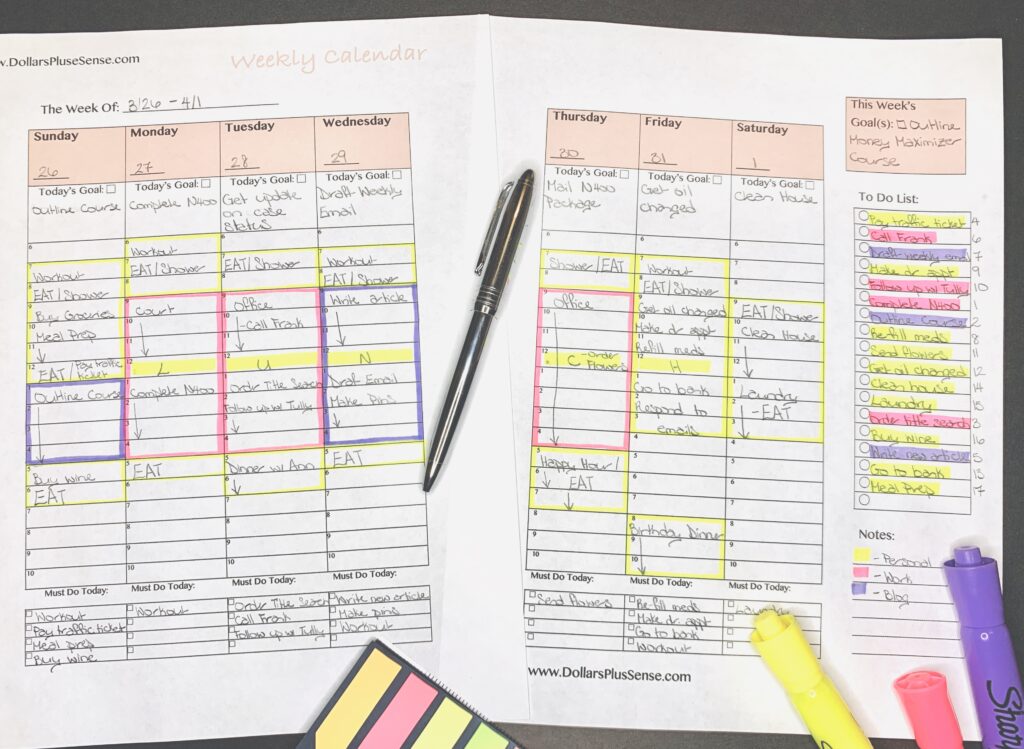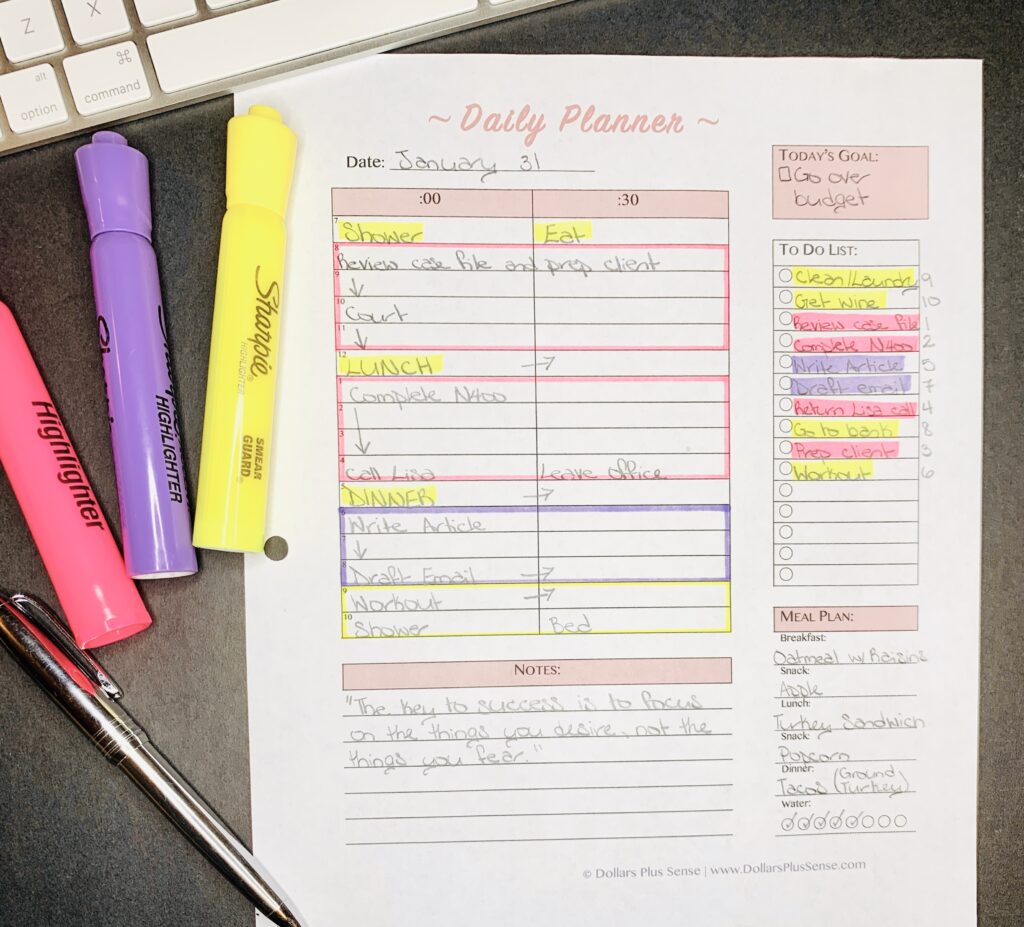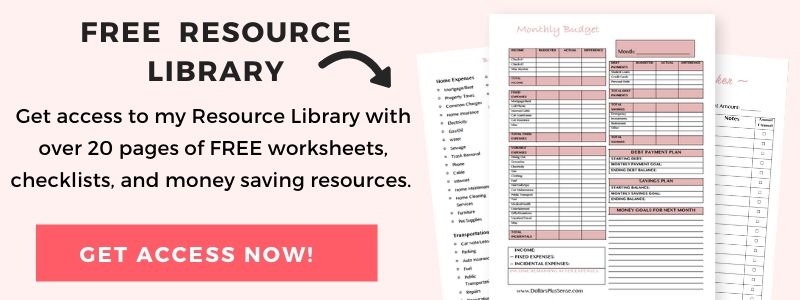Last Updated November 23, 2020
Do you set financial goals, but have a hard time actually achieving it? I know how you feel. I had a hard time achieving my goals too, but then I found a system that works. Find out some easy ways you can accomplish your long term financial goals quickly.
What Is A Long Term Financial Goal?
A long term financial goal is something you hope to achieve with your money in the far future. Long term financial goals aren’t one size fits all, because everyone has different hopes and priorities when it comes to their money.
How Long Is A Long Term Financial Goal?
Most long-term goals usually take more than 10 years to achieve. However, keep reading to find out how you can accomplish your long-term financial goals much faster than you ever thought possible.
What Is An Example Of A Long Term Financial Goal?

Some examples of long-term financial goals most people would like to achieve are:
- Buy A House
- Pay For My Child’s Education
- Retire Comfortably
- Pay Off My House
- Achieve Financial Freedom
How To Set Long Term Financial Goals?
Your long-term financial goals need to be written out and planned for. When setting your goals, use the acronym SMART. SMART stands for: Specific, Measurable, Achievable, Relevant, and Timely.
Specific
You want to make your goals as specific as possible. For example, rather than saying, “I want to save more money,” you should say “l want to save at least $600.” As you can see, the second example is much more specific.
Measurable
Make your goals measurable so that you can track your progress and know when you’ve achieved your goal. Using my previous example of saving at least $600, this goal is also measurable. The goal of saving at least $600 is measurable because I will know I achieved my goal once I reach $600.
Achievable

You want to make your goals achievable. You don’t want to set a goal that is impossible.
For example, setting a goal of becoming an Olympic swimmer is almost impossible for me. I am in my 30’s and I don’t know how to swim! Even if I devoted my life to swimming at this point, I could not honestly see myself achieving that goal one day.
That’s not to say you shouldn’t set goals that are challenging; however, your goals should be achievable. If your goals are too unrealistic or not achievable, you will probably give up on that goal in due time.
Relevant
Your goals should be relevant to your overall plans in life. Achieving your goals should be contributing something positive or provides a benefit to your life.
Going back to our previous example of saving at least $600, achieving this goal would definitely provide benefits to my life personally. It also aligns with my overall goal to be financially free. Since this goal is relevant to my overall plans in life, I would be more motivated to accomplish it.
Timely

Finally, you want your goal to have a time limit where you set an end date to achieve your goal. For example, to improve our previous goal of saving at least $600, you could say, “I want to save at least $600 in the next 12 months.”
You would be much more motivated to accomplish your goal if you know you have a set amount of time to accomplish it. Without adding that target time limit, you may only save $50 here and there when you can. But knowing you only have 12 months to accomplish this goal, you would be much more disciplined to try and save $50 every month.
How To Accomplish Your Long Term Financial Goals?
Now that you know how to set financial goals, here are 5 easy tips to help you accomplish your long-term financial goals and get results fast:
1. Use Tools To Help You Accomplish Your Financial Goals
The first step to accomplishing your long-term financial goals to have the right tools. I love planners and have tried so many different ones. But my favorite planner is the Financial Goal Planner.

I created the Financial Goal Planner because I couldn’t find a planner I liked specifically dedicated to your finances.
The Financial Goal Planner is a carefully curated planner filled with 37 pages worth of printables to help you make a plan for financial success and crush your financial goals.
With this planner, you can set up your budget, save more money, and make a clear plan to get out of debt faster than you ever thought possible. This goal planner has everything you need to be productive, manage your time wisely, organize your finances, and set money goals.
I highly recommend you check out the Financial Goal Planner because the value is AMAZING and it has made a difference in my life!
You will save money because you never have to buy another planner again. Keep the files for life and reprint the pages you need—or keep it in the digital format and use it with a note-taking app as I do.
Having an action plan in place allowed me to be financially free in 6 short years (I initially thought it was going to take me 15 years—so I was able to meet my goal in less than HALF the time).
I think this is a solid planner you can use if you don’t already have a daily planner. It is also good to use in conjunction with any planner you already have. You can print out parts of the Financial Goal Planner to supplement the physical planner you already have or use it digitally (which makes it easier to carry than your physical planner).
You will love the Financial Goal Planner because:
- You never have to buy another planner again because you can keep reusing the file.
- You get a lot of value for the price.
- You don’t have to wait until January to use it.
- It’s so much more than a goal planner. There are printables to help you with time management, productivity, and money management.
- You can customize by printing/using the printables you need to make a planner how you want it.
I would definitely recommend the Financial Goal Planner to all of my readers. You can read more about the Financial Goal Planner in my article “5 Ways To Be More Productive: Financial Goal Planner.”
2. Break Down Goals Into Smaller Milestones

Since your long-term financial goals take a long time to achieve, you need to break them down into smaller milestones. Having smaller bite-sized goals makes your goal more manageable and less overwhelming. You will also stay motivated to keep going every time you achieve each smaller milestone.
So break down your 10+ year goal into what you want to achieve every year. Next, you should break down your yearly financial goals into monthly, weekly, and daily goals.
For example, let’s say you have a goal of saving at least $300,000 in the next 12 years. I would break this goal down into smaller milestones of saving $25,000 per year. Then break it down further to how much I would need to save per month, week, and per day.
Use this FREE Daily Goal Planner to make sure you do something every day to work towards your goals. The daily goal planner will help you make a to-do list and prioritize your tasks that you need to accomplish in a day. You can use this free printable in conjunction with your planning system.
3. Consider Potential Pitfalls
Next, if you want to accomplish your financial goals, you need to take into consideration the things that may cause potential pitfalls. Then figure out how to remedy that or avoid the pitfall altogether.
You want to avoid anything that could keep you from reaching your goal.
For example, let’s say you have a goal of saving $500 per month, and you know you may be tempted to buy a cup of $5 Starbucks coffee multiple times during the month. Therefore, you should try to make your coffee before heading to work or taking a route to work that doesn’t require you to pass a Starbucks.
4. Plan To Work Towards Your Financial Goals Regularly

You need to do something every day that will bring you closer to your goals. I recommend using a daily planner to help you accomplish your financial goals. Write out your daily, weekly, and monthly goals. Also, have a “to-do” list and cross off tasks as you accomplish it.
Lastly, whenever you get the feeling, you should take notes and write down your thoughts periodically. I find that writing down my thoughts and goals all in one place helps me focus on my goal, and serve as a reminder of why I need to stay motivated.


Here’s an example of how I use my Financial Goal Planner (pictured above) to work towards my goals every day. With my weekly or daily planner, I normally have my to-do list on the right-hand side.
When I use my weekly or daily planner, I put a number next to each item on my to-do list in order of priority. The number 1 means that item on my to-do list is a top priority. The number 2 means it’s second priority and so on.
Next, I blocked my time based on similar tasks. I put my work tasks together (pink), my blogging tasks (purple), and my personal tasks (yellow). Finally, in the “notes” section, I sometimes like to write down inspirational quotes to keep me motivated to keep going.
5. Review Your Progress Periodically
If you want to accomplish your long-term financial goals, you should review your progress at least every year. However, it’s best to have quarterly reviews and analyze your data to see if you’re on schedule to accomplish your goals for the year.
It is important to track your progress. This way you can analyze what actions are successful and what actions need improvements. You can use this FREE Net Worth Worksheet found in my Resource Library to help you review and keep track of your progress.
My free Resource Library is filled with over 20 pages of FREE worksheets, checklists, and money-saving resources. So sign up to get the secret password to get access.
Summary
In order to accomplish your long-term financial goals, I recommend creating an action plan. People who identify their goals and work towards them usually accomplish their goals and accomplish them quicker. Start by establishing one big long-term goal, and then break it down to smaller more specific goals or milestones.
Also, take into consideration the things that may prohibit you from reaching your goal. Finally, you have to do something every day that will bring you closer to achieving your financial goal and review your progress regularly.
Related Articles:
- The Best Way To Prioritize And Achieve Your Financial Goals
- 10 Habits Of Successful People (That You Should Have Too)
- 9 Proven Benefits Of Being Organized That Will Save You Money
If you want to remember this article, pin it to your favorite Pinterest board.















4 Comments on 5 Easy Tips To Accomplish Your Long Term Financial Goals Quickly